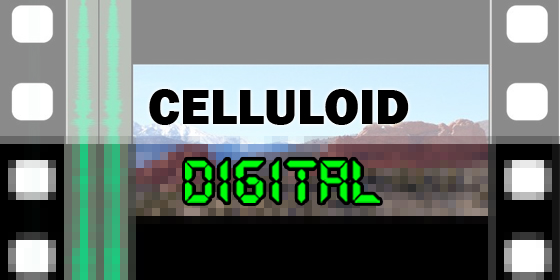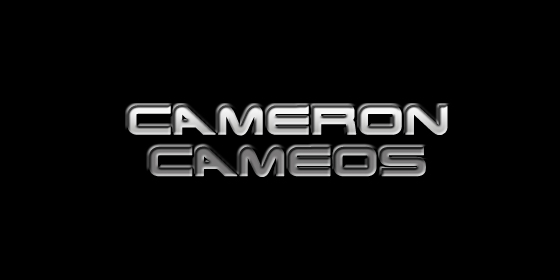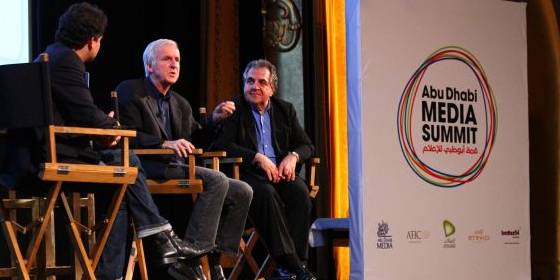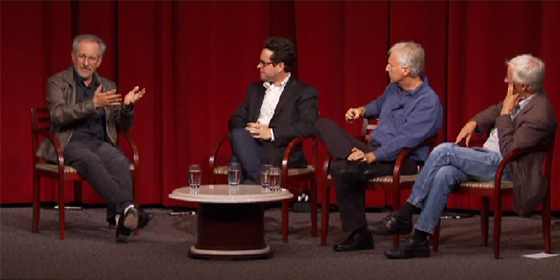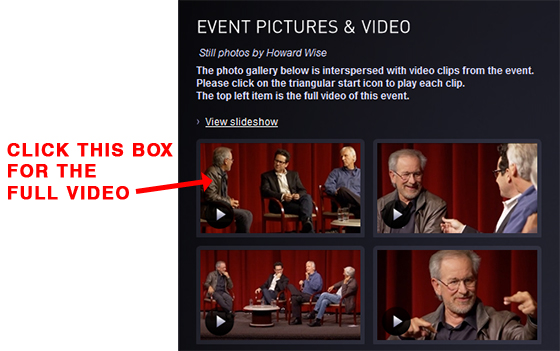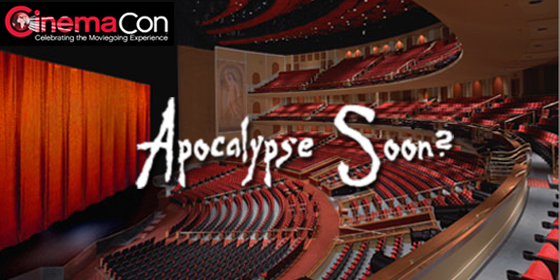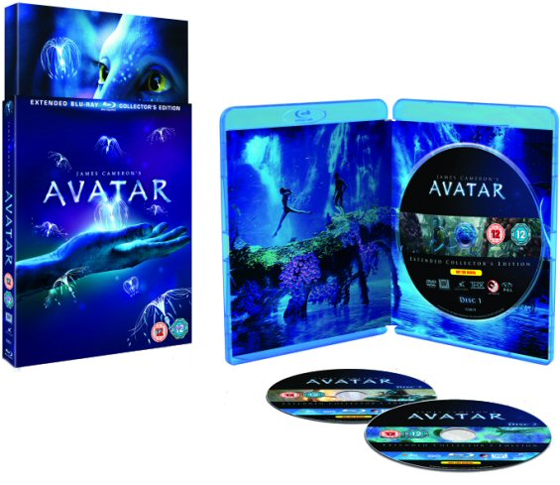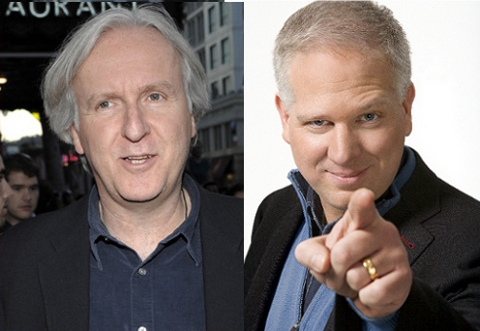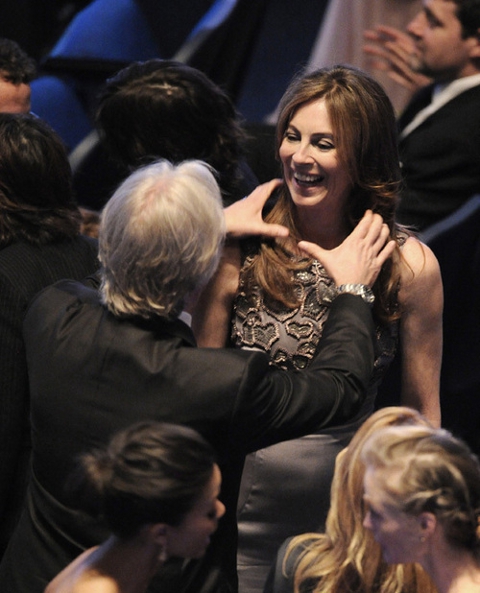The digital revolution in how films are seen and made is currently spelling a slow death for celluloid.
Since the early days of photographic film in the late 19th century, moving pictures have been captured and then projected via some form of celluloid print.
The origin of the name “film” even comes from the process and has been the primary method for recording and displaying motion pictures for over a century.
But with the advent of digital technology over the last decade the days of film-based production and projection are numbered.
This also presents an an interesting paradox: what will we call films once they are no longer shot or projected on film? (Should I rename this very website?)
But whilst we ponder that, it is worth exploring why this is all happening and the differences between the old and new processes.
PROJECTION
From the early days of cinema until very recently light has shone through a piece of celluloid and the resultant moving image was then projected on to a cinema screen.
This video by the Phoenix Cinema in Finchley shows how film projection has traditionally worked:
In the last few years cinemas around the world have been gradually replacing the above method with digital projectors, which essentially replace cans of film with a large hard drive of data which is then projected via a computer system.
This video from the Electric Cinema in Birmingham shows how a local UK cinema is dealing with the transition to digital:
But why is this happening?
Think back to the first four months of 1998 when Titanic was dominating the global box office.
In cinemas around the world 35mm prints of that movie had been delivered in cans and spooled through projectors on to screens.
Although it was a box office phenomenon that played for an unusually long time, James Cameron has since revealed an interesting technical paradox about its success.
At the Cinema Con conference back in April he claimed that the only reason it didn’t play longer was because the prints physically wore out after 16 weeks.
“Titanic played so long that our prints fell apart. We actually only left theaters because our prints [had become] unwatchable. We hit the upper boundary of how long prints can run in theaters, and I can tell you how long that is – its 16 weeks. It’s a good problem to have but for the last half of that [theatrical run] they looked pretty ragged, they were all scratched up… so all that stuff is in the past and we’re really in a brave new world right now.”
The rise of digital cinema projection began in 1999 just when digital optical discs were gaining traction in the home market with the DVD format.
The first major film to be digitally projected was Star Wars: Episode I – The Phantom Menace, although it was only shown on a limited number of screens in New York and Los Angeles.
Over the next decade, digital projection gradually become a reality: 2002 saw the major studios form a joint initiative to agree on technical standards and by 2007 many multiplex and arthouse screens in the UK began upgrading to digital systems.
But for wide acceptance the new system still needed a boost and in the same way that Star Wars in 1977 convinced cinemas to upgrade their sound systems, Avatar would be a game changer for visuals.
When James Cameron was making his sci-fi epic, he felt that 3D films would ride on the back of digital cinema, only to find out that its staggering commercial success actually drove the digital conversion of the remaining cinemas, as 3D movies can only be shown on digital screens.
So in the heady days of early 2010 as Avatar was overtaking Titanic as the all-time box office champ, many executives in Hollywood were convinced 3D was a magic formula, especially as it was quickly followed by the huge commercial successes of Tim Burton’s 3D version of Alice in Wonderland and Toy Story 3.
You could debate that those films were going to be hits anyway but studios and cinema owners looked at the numbers and felt they would be missing out if they didn’t have digital screens to show 3D movies, even if the quality was poor (as was the case with Clash of the Titans that Easter).
During 2009 there were 650 digital screens in the UK, but just a year later this had nearly trebled to 1400, with 1080 of them 3D enabled. This meant that 80 per cent of all cinema releases in the UK were on digital prints, compared to France where the figure was just 20 per cent.
Another driver has been hugely profitable animated films in 3D, such as the recent Pixar movies (Up, Toy Story 3) and even less acclaimed films like Ice Age 3 and Rio, which have been enormously profitable for studios.
The formula is a seductive one – they aren’t as risky or expensive to make as a big-budget live action film and they have a wide appeal to family audiences who often go more than once and buy their kids related merchandise.
This is why cinemas during school holidays increasingly resemble an animation convention.
But the post-Avatar boom in 3D titles has given way to a dip of sorts, with some questioning just how much it has boosted recent blockbusters, but whether the 3D trend continues or not, digital projection is here to stay.
But how long before film-based projection will effectively end?
It seems the end of 2013 will be a key moment.
Part of what is driving the digital revolution is raw economics and the reduced costs of shipping digital versions of movies to cinemas as opposed to cans of film.
At a movie conference in Australia earlier this year a participant said that major studios have made deals that will effectively end the wide distribution of film prints by 2013.
After that an independent cinema could still rent an old celluloid print, but the rise in costs will make it prohibitive for them, so in a few years this projection method will effectively be over.
At CinemCon earlier this year in Las Vegas, the head of NATO (North American Theater Owners) John Fithian said that almost 16,000 screens out of a total of 39,000 had been converted to digital and confirmed that the end of 2013 was effectively a cut off date.
He essentially urged members who hadn’t made the jump yet to get on board or go out of business:
“For any exhibitor who can hear my voice who hasn’t begun your digital transition, I urge you to get moving. The distribution and exhibition industries achieved history when we agreed to technical standards and a virtual print fee model to enable this transition. But the VPFs won’t last forever. Domestically, you must be installed by the end of 2012 if you want to qualify. Equally significantly, based on our assessment of the roll-out schedule and our conversations with our distribution partners, I believe that film prints could be unavailable as early as the end of 2013. Simply put, if you don’t make the decision to get on the digital train soon, you will be making the decision to get out of the business.”
Is this a sad development or the start of a new and exciting era?
There is a lot of misplaced nostalgia about a print being lovingly threaded through a projector by a dedicated projectionist and that there is something inherently special in 35 mm.
It is true that a good print in a decent cinema looks great, but if you ventured outside of the premium cinemas that critics and filmmakers view films on, there was a different story.
Back in 2007 I saw Ocean’s Thirteen projected digitally at Warner Bros in London and it looked and sounded great – colours popped and the image was stable.
When I saw an analogue equivalent a few weeks later at a multiplex in East London, the image was dim, the print was scratched and the whole experience was less than satisfactory.
During 2009 I saw major releases such as Funny People and Sherlock Holmes on opening night at a suburban multiplex and not only were the celluloid prints degraded but it was also shown in the wrong aspect ratio (i.e. the widescreen image was clipped at the sides).
Part of the reason you don’t often hear about poor projection in the media is that most audiences don’t know any better (and who would they complain to if they did?) whilst journalists writing about films tend to see them at preview screenings at decent cinemas.
Hence you hear a lot about the decline of the projectionist as opposed to how poor the image and sound quality could be for most people who weren’t able to get to a decent cinema.
But with digital projection there are issues that still need to be addressed such as the brightness levels of 3D films and the wrong projector lenses being left on for 2D films.
As with any new technology, there will be teething problems. During a press screening at last month’s London film festival at the Odeon Leicester Square (probably the most high profile cinema in the country) faulty audio issues meant that the film had to be paused (as it was digitally projected, the image held on screen just like a DVD player)
But this isn’t primarily a technical issue, but a human one – if cinemas employed the right people to make the necessary checks then issues like this wouldn’t happen.
Multiplexes should actually continue to employ projectionists to oversee what the audience sees – cutting costs here is damaging to the long term health of the cinema experience.
In an age where it is much cheaper for audiences to rent or download a wide range of high quality films in the home, this is something they should be wary of.
As for the art-house chains in the UK, such as Picturehouse and Curzon, you could argue digital has been a success: not only is there a reduced cost for distributor and cinema but a film like Senna definitely benefited.
Watching Asif Kapadia’s documentary this summer at the HMV Curzon cinema in Wimbledon was an eye-opening experience: not only were the sound and audio excellent, but it was a good example of how digital can benefit lower budget films, as well as the big tent pole releases.
Although distributed by the UK arm of a major studio (Universal) it was a specialist release at selected cinemas which needed careful planning and the reduced costs in digital distribution almost certainly helped it become the highest grossing documentary so far this year.
It is also worth noting that digital has reduced costs for documentary filmmakers, which is perhaps why we are seeing a resurgence this year with films shot in the format from such heavy hitters such as Errol Morris (Tabloid) and Werner Herzog (Into the Abyss), along with directors newer to the genre like Kapadia.
CAPTURE
The death of celluloid as a projection medium is only two years away, but arguably has a longer life as a tool to capture the action we end up seeing on screen.
But the long term future is less assured.
Last month the world’s leading film camera manufacturers – Arri, Panavision and Aaton – confirmed that they would cease production on traditional cameras and now focus entirely on digital models.
Arri’s VP for cameras Bill Russell said to Creative Cow recently:
“The demand for film cameras on a global basis has all but disappeared. There are still some markets – not in the U.S. – where film cameras are still sold, but those numbers are far fewer than they used to be. If you talk to the people in camera rentals, the amount of film camera utilization in the overall schedule is probably between 30 to 40 percent. In two or three years, it could be 85 percent digital and 15 percent film. But the date of the complete disappearance of film? No one knows.”
Although there will still be plenty of older camera bodies available for some time to come, it did seem to mark the end of an era: what would the medium of film be without film stock?
That question would seem to lie with Kodak and Fujifilm, the two main suppliers to the film industry.
But with the proliferation of consumer digital cameras in the home, 2011 is not a great time to be manufacturing celluloid – back in September the Wall Street Journal reported that Kodak’s share price had dropped to an all-time low as it hired lawyers to help restructure its business.
Ominously for fans of the older process, the large service companies that print and distribute celluloid for the major studios, principally Technicolor and Deluxe, have been hit by the rise of digital and are moving their processes in accordance with the times.
Technicolor recently shut their film labs in Hollywood and Montreal whilst Deluxe ceased processing 35mm and 16mm negatives at two UK facilities.
In preparation for a recent exhibition, artist Tacita Dean was shocked to discover that Deluxe had stopped processing 16mm film stock altogether.
Her latest work is simply called ‘Film’ and is essentially a love letter to the declining medium – a silent 35mm looped film projected onto a monolith standing 13 metres tall inside the Turbine Hall of the Tate Modern in London.
In the Creative Cow article, Deluxe executive Gray Ainsworth basically admitted that they were preparing for a digital future:
“From the lab side, obviously film as a distribution medium is changing from the physical print world to file-based delivery and Digital Cinema. The big factories are absolutely in decline. Part of the planning for this has been significant investments and acquisitions to bolster the non-photochemical lab part of our business.”
With Technicolor also making investments in visual effects and 2D-to-3D conversion it seems that that two pillars of the old order are preparing for a future without celluloid.
However, film capture will remain for a few years to come with high profile directors like Steven Spielberg and Christopher Nolan staying loyal to the traditional photochemical process.
But there is no doubt that over the last decade digital has gradually found favour with filmmakers such as Michael Mann, David Fincher and James Cameron.
If you take A-list directors as a group they are at something of a crossroads, with the film side claiming that digital is still visually inferior, whilst the digital camp say that cameras have not only caught up, but will get better and that a digital work flow saves money and time.
This split was best seen in early 2010 at a panel during the Santa Barbara Film Festival in the run up to last year’s Oscars when Quentin Tarantino declared that he would rather burn his LA repertory cinema down rather than show a digital print there [beginning at 5.20].
Whilst the crowd are laughing and applauding at Quentin for his defence of 35mm film prints, fellow panellist James Cameron can be seen shaking his head slightly as if he couldn’t disagree more, given his advocacy for digital capture and projection as the future of cinema.
Only a couple of months ago he was unveiling a new 3D rig for Arri’s Alexa M camera and said:
“People are welcoming that they can finally drive a stake through the heart of film”
From Cameron’s point of view the hurdle has been two-fold: to get filmmakers conditioned to using celluloid to embrace digital cameras and 3D.
Part of the reason is that film-based processes don’t work if you are shooting natively in 3D (as opposed to post-converting) as you need to sync both stereo channels with precision, which can’t really be achieved using conventional film cameras.
Whilst the jury may be out on 3D, it seems that the last 18 months have marked a tipping point for sceptical directors and cinematographers.
Arri were instrumental in shaping the film camera throughout the twentieth century, inventing the world’s first reflex shutter camera in 1937 – the Arri 35 – and then its successor the Arri 35 II, which is amongst the most influential 35mm cameras ever built, with its portable and durable design gracing numerous features and documentaries.
The Arri Alexa could be to the digital era what the 35 II was for the age of celluloid, with world class cinematographers like Roger Deakins and Robert Richardson using it, with Deakins saying in a recent interview with the British Society of Cinematographers:
“I was surprised how quickly I became comfortable shooting with a digital camera”
Richardson shot the new Martin Scorsese film Hugo in 3D using the aforementioned Alexa M camera and films such as Melancholia, Drive and Anonymous were all shot using the camera and the quality of the images appears to have won over many digital sceptics.
Anna Foerster, the DP on Roland Emmerich’s new film Anonymous, has said of the camera:
“It was interesting because so far I have always shot on 35 mm and I kind of felt lucky that I had escaped digital for so long. I think that the moment I was confronted with digital was the moment we reached a level that is absolutely amazing and incomparable to what has come before”
The pioneering company in the digital realm were RED whose cameras were embraced by Steven Soderbergh, Doug Liman and David Fincher and with the new Hobbit films being shot on them it would appear Peter Jackson has fully signed up to the digital revolution.
Soderbergh has shot all of his recent films on the RED camera (starting with Che in 2008) and talks here about what it means for directors:
Interestingly, the biggest release of next year will buck the digital trend – The Dark Knight Rises will be shot on a combination of IMAX and 35mm film stock, which will provide resolutions higher than any current digital camera can muster.
But even Christopher Nolan has admitted that the bulk of camera research and development over the last decade has gone into digital, so he represents an exception rather than the rule.
However, Nolan and his DP Wally Pfister are stout defenders of film-based cameras for a reason – the image captured on them can look phenomenal if done correctly.
At this year’s Cine Gear Expo 2011 Rob Hummel gave a talk as to why film is still a superior capture format:
Again at the recent London film festival I saw back-to-back press screenings of Like Crazy and Pariah on the NFT screen at the BFI Southbank, which is one of the best cinema screens in the country.
There was no question that Like Crazy (shot on Canon DSLR cameras) looked inferior to Pariah (shot using 35mm on an Arri Camlite), which demonstrates that film stock still has a place as a capture medium.
Cinematographer John Bailey spoke earlier this year about why he still shoots on film and the dilemma facing movie archives if we eventually move in to an all digital world:
But what does this march towards digital capture and projection mean for the industry and the average cinema goer?
Whilst some audience members won’t immediately notice the difference, digital projection means greater stability of image and perhaps an opportunity for lower budget films to make a greater mark, as it reduces distribution costs in the long run.
For many filmmakers, it represents the dawn of a new era in which workflows and resolutions will improve as sensors, lenses and on-set data systems (such as those used on Hugo) allow greater flexibility once they have adapted to the possibilities afforded to them by newer and ever improving technology.
For celluloid though the end has already begun, as the photochemical process which sustained cinema for over a century slowly fades into an oncoming digital reality.
> More on film stock at Wikipedia
> Matt Zoeller Seitz at Salon on the death of film
> WSJ on Kodak’s problems
> DLP cinema
> Time Out on the decline of projectionists
